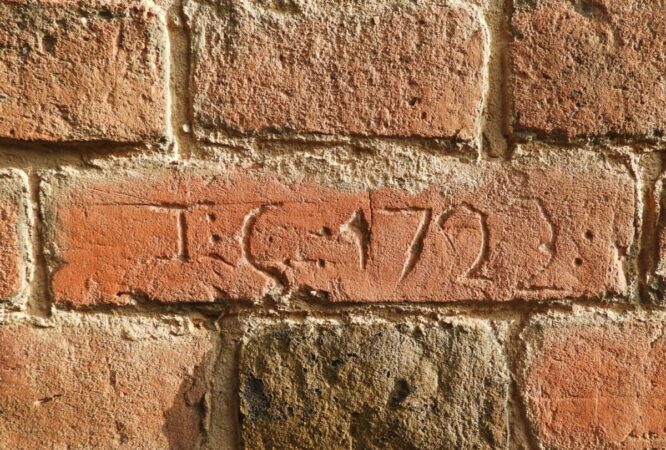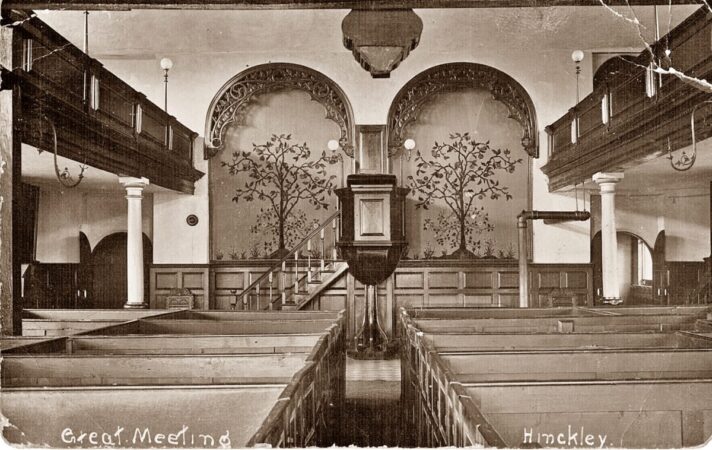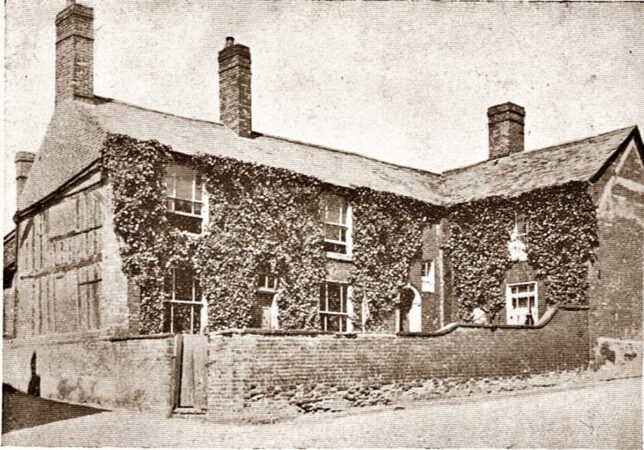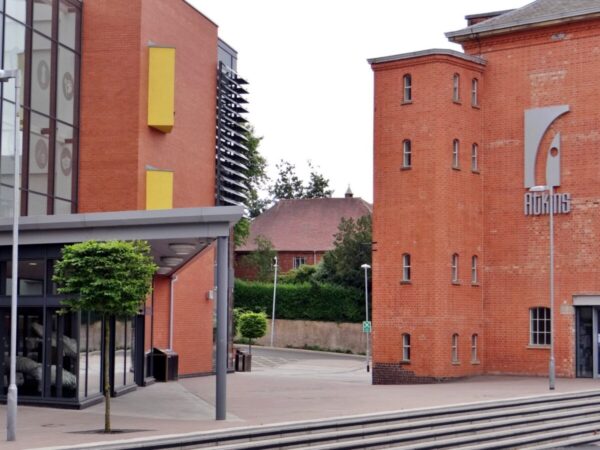History
The 1662 Act of Uniformity gave rise to a Presbyterian movement , assisted in Hinckley by Rev. Nathanial Stephens recently ejected from the rectory at Fenny Drayton. In 1672 a house was licensed in Hinckley and became the first meeting house in the town. In 1685 a house was built and converted into a meeting house for a growing congregation.

In January 1720 a right of way was obtained to build a pathway to what is now our present building which was erected during the summer of 1722 and was opened for worship on the last Lord’s day of November. In 1783, Rev. William Severn established a clear Unitarian presence at the Chapel. In the early 1830s Rev. Charles Nutter became minister and tried to alleviate the poor conditions of the framework knitters in Hinckley. He provided adult education classes for the people of the town. Two of those involved, Joseph Dare and John Gent Brooks, became Domestic Missioners. Dare was the first in Leicester and Brooks the first in Birmingham.
By the 1850s the town recovered & the Sunday School, was very active. At the Anniversary in 1858 there are 10 teachers and 96 scholars recorded as being present. Rev. William Mitchell became minister in 1860. He was prominent in the establishment of the Hinckley and District Co-operative Society in 1861. George Dare was the first Secretary & Manager. In addition George was Secretary of the first Building Society in the town.
The 1860s were a period when Chapel and town witnessed many changes. Work began on an extension to the school rooms which was completed in 1869. Framework knitting, often in the home, was replaced by steam powered factories.
The Atkins family; three brothers Hugh, John & Thomas with their widowed mother, Elizabeth were great patrons of the Chapel. The town library was built in memory of Arthur Atkins in 1888. Hugh was prominent in the area of music at the Chapel composing many choral pieces. He presented the Chapel with its first organ in 1890.The death of Mrs Hugh Atkins at the turn of the century resulted in a remarkable memorial. The ladies of the Atkins family embroidered two crewel work tapestries of apple trees which dominate the end of the Chapel on either side of the pulpit.

The Sunday school continued to grow and was extended to accommodate more pupils. As the new century came along more changes came too, the parsonage at the end of Baines Lane was demolished and Great Meeting Terrace was build along with three houses next to the Chapel

At the outbreak of WWI many Chapel members joined up, sadly a number never returned. A memorial to men lost in both World Wars in to be found in the Chapel and Sunday school.
The box pews have gone, replaced in 1921 with modern seating, gone too, the coke fired heating and communion rail….but the echos of the past are all around and somehow a comfort through troubled times.
We have modern music both recorded and from our wonderful organ. We still raise money for charities at regular coffee mornings and other public events.

Our building is fully accessible, we hire out rooms for meetings and the Chapel is available for concerts or other events and can accommodate up to 200 people. We were the first place of worship in the town to host same-sex marriages and also welcome people of all faiths or none into our midst.
